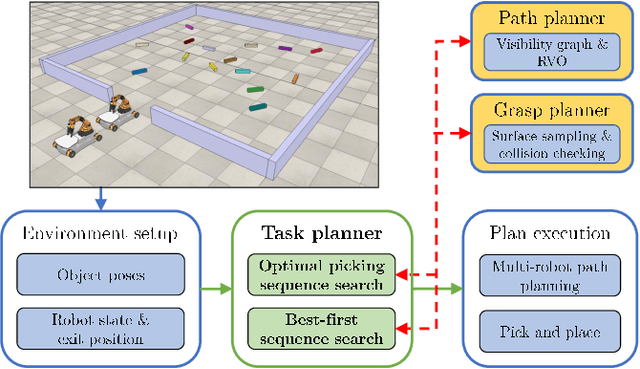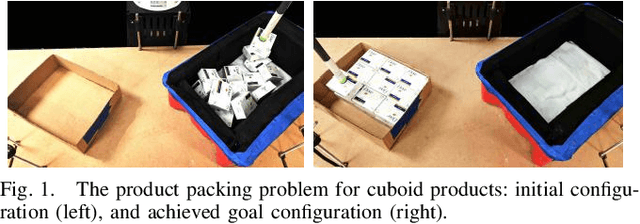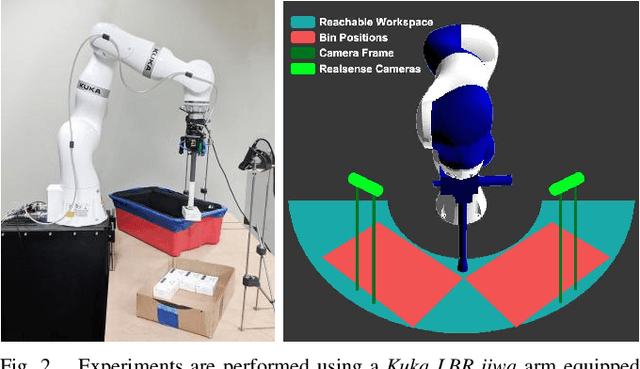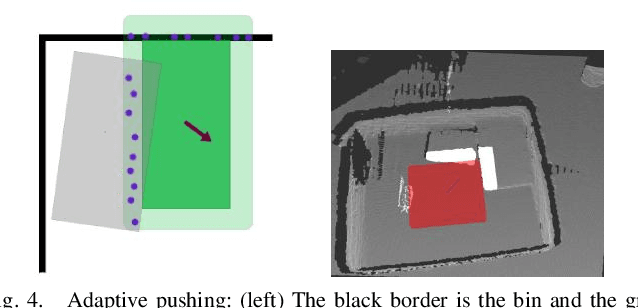Wei N. Tang
Computing High-Quality Clutter Removal Solutions for Multiple Robots
Jul 09, 2020



Abstract:We investigate the task and motion planning problem of clearing clutter from a workspace with limited ingress/egress access for multiple robots. We call the problem multi-robot clutter removal (MRCR). Targeting practical applications where motion planning is non-trivial but is not a bottleneck, we focus on finding high-quality solutions for feasible MRCR instances, which depends on the ability to efficiently compute high-quality object removal sequences. Despite the challenging multi-robot setting, our proposed search algorithms based on A*, dynamic programming, and best-first heuristics all produce solutions for tens of objects that significantly outperform single robot solutions. Realistic simulations with multiple Kuka youBots further confirms the effectiveness of our algorithmic solutions. In contrast, we also show that deciding the optimal object removal sequence for MRCR is computationally intractable.
Taming Combinatorial Challenges in Optimal Clutter Removal Tasks
May 31, 2019



Abstract:We examine an important combinatorial challenge in clearing clutter using a mobile robot equipped with a manipulator, seeking to compute an optimal object removal sequence for minimizing the task completion time, assuming that each object is grasped once and then subsequently removed. On the structural side, we establish that such an optimal sequence can be NP-hard to compute, even when no two objects to be removed have any overlap. Then, we construct asymptotically optimal and heuristic algorithms for clutter removal. Employing dynamic programming, our optimal algorithm scales to 40 objects. On the other hand, for random clutter, fast greedy algorithms tend to produce solutions comparable to these generated by the optimal algorithm.
Towards Robust Product Packing with a Minimalistic End-Effector
Mar 03, 2019



Abstract:Advances in sensor technologies, object detection algorithms, planning frameworks and hardware designs have motivated the deployment of robots in warehouse automation. A variety of such applications, like order fulfillment or packing tasks, require picking objects from unstructured piles and carefully arranging them in bins or containers. Desirable solutions need to be low-cost, easily deployable and controllable, making minimalistic hardware choices desirable. The challenge in designing an effective solution to this problem relates to appropriately integrating multiple components, so as to achieve a robust pipeline that minimizes failure conditions. The current work proposes a complete pipeline for solving such packing tasks, given access only to RGB-D data and a single robot arm with a vacuum-based end-effector, which is also used as a pushing finger. To achieve the desired level of robustness, three key manipulation primitives are identified, which take advantage of the environment and simple operations to successfully pack multiple cubic objects. The overall approach is demonstrated to be robust to execution and perception errors. The impact of each manipulation primitive is evaluated by considering different versions of the proposed pipeline, which incrementally introduce reasoning about object poses and corrective manipulation actions.
 Add to Chrome
Add to Chrome Add to Firefox
Add to Firefox Add to Edge
Add to Edge